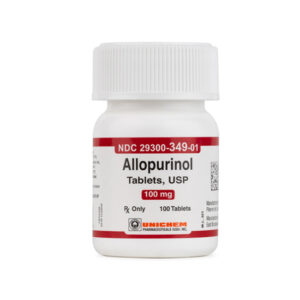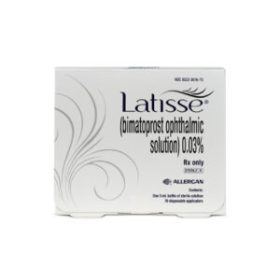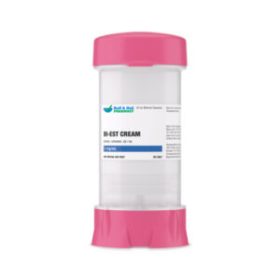Acne Ultra Gel (Clindamycin / Niacinamide / Tretinoin) (30 mL)
Clindamycin Phosphate, Niacinamide, and Tretinoin Explained
Clindamycin Phosphate is an antibiotic that works by stopping bacteria from making proteins they need to grow. It’s been used since 1970 and comes in different forms—oral tablets, creams, foams, and vaginal treatments. It’s commonly used for infections without oxygen, acne, and bacterial vaginosis. Some products like Clindesse™ and Evoclin™ are specially designed to treat women’s health and acne.
Unlike niacin, it doesn’t lower cholesterol but is great for preventing deficiencies like pellagra, which causes diarrhea, skin problems, and mental confusion. It’s often used as a supplement.
Tretinoin is a powerful form of vitamin A that helps cells grow and repair. Topical tretinoin is popular for treating acne, sun-damaged skin, and certain skin disorders. Oral tretinoin is used in blood cancer treatments, especially acute promyelocytic leukemia (APL), helping cells mature without the harsh side effects of chemotherapy. However, it can cause skin irritation and more serious side effects in cancer treatments, so doctors carefully monitor its use.
Clindamycin Phosphate, Niacinamide, and Tretinoin: What You Should Know
Clindamycin phosphate is an antibiotic that works by stopping bacteria from multiplying, though it doesn’t kill them immediately. Some bacteria can become resistant to it, especially if they’re also resistant to related antibiotics, so doctors may run tests to be sure. A serious side effect is a severe form of diarrhea caused by gut bacteria imbalance.
Niacinamide, a form of vitamin B3, helps the body turn food into energy and supports processes like fat metabolism and red blood cell health. Unlike niacin, it doesn’t cause flushing or stomach upset and isn’t used to lower cholesterol. Still, it’s widely used as a safe supplement.
Tretinoin, derived from vitamin A, helps skin cells shed and renew faster. It’s used for acne, sun-damaged skin, and certain skin disorders. It’s also used in treating a type of leukemia by helping immature cells mature. While effective, it can cause serious side effects and requires careful monitoring during use.
Clindamycin Phosphate
People allergic to clindamycin or similar antibiotics shouldn’t use it. It should also be used carefully by those with asthma, serious gut issues, or a history of colitis. Serious skin reactions like Stevens-Johnson Syndrome or TEN can occur—if you notice a rash, blisters, or swelling, stop immediately and get medical help. It may kill helpful bacteria, leading to yeast or fungal infections, and can cause severe diarrhea linked to gut bacteria overgrowth, especially in older adults. For creams or gels, avoid contact with eyes or broken skin.
Niacinamide (Niacin)
Those with liver disease, ulcers, or bleeding problems should avoid niacin. It may affect liver function, raise blood sugar, worsen gout, or cause stomach irritation. High doses should only be used if benefits outweigh risks, especially during pregnancy or breastfeeding. Children under 10 shouldn’t use it for cholesterol issues unless supervised by a specialist.
Tretinoin
People allergic to vitamin A or fish proteins in certain creams should avoid tretinoin. It makes skin sensitive to sunlight and can irritate eczema or damaged skin. For leukemia treatment, it may cause serious complications like fever and breathing trouble, requiring close monitoring. Only specific forms are approved for children.
These medicines—clindamycin, niacinamide, and tretinoin—are helpful, but they can sometimes cause side effects that are important to know about. Clindamycin works well against infections but may cause stomach problems like diarrhea, nausea, or stomach pain. A more serious issue is severe diarrhea from harmful bacteria, which can be life-threatening. Some people also notice a metallic taste or pain when swallowing. In rare cases, clindamycin can trigger serious allergic reactions like skin rashes, hives, or conditions that cause skin peeling. Vaginal creams may also cause irritation or yeast infections.
Niacinamide, often used as a vitamin, is safe when used in recommended amounts but may cause flushing—a warm, red feeling on the face or chest. High doses can also affect the liver, raise blood sugar, or worsen gout, so people with certain health conditions should be cautious.
Tretinoin, used for acne and some cancers, may cause skin dryness, redness, or sensitivity to sunlight. Oral forms for cancer treatment can lead to severe complications like fever, breathing trouble, or liver issues.
It’s important to watch for warning signs and stay in close contact with healthcare providers to ensure safe treatment.
When it comes to pregnancy and breastfeeding, it’s important to be extra careful with medications like clindamycin, niacinamide, and tretinoin.
Clindamycin has been studied in pregnant women, and while it doesn’t seem to cause birth defects in later pregnancy, there’s some concern when it’s used in the first trimester. It should only be taken if absolutely needed.
Niacinamide is a form of vitamin B3 and is safe when used at normal levels like those in prenatal vitamins. However, high doses for treating conditions like high cholesterol should only be used if the benefits outweigh any risks. Breastfeeding mothers can safely use recommended doses, but higher doses should be discussed with a healthcare provider.
Tretinoin, especially in oral form, is not safe during pregnancy because it can cause birth defects. Even topical forms should be used cautiously. Breastfeeding while on oral tretinoin isn’t recommended, and topical forms should be applied carefully, avoiding large areas of skin.
Store this medication in its original container at 68°F to 77°F (20°C to 25°C) and away from heat, moisture and light. Keep all medicine out of the reach of children. Throw away any unused medicine after the beyond use date. Do not flush unused medications or pour down a sink or drain.
- Luft BJ, Hafner R, Korzun AH, et al. Toxoplasmic encephalitis in patients with the acquired immunodeficiency syndrome. N Engl J Med 1993;329:995-1000.
- Niaspan (niacin extended-release) tablet package insert. North Chicago, IL: Abbott Laboratories; 2015 Apr.
- HPS2-THRIVE Collaborative Group. Effects of extended-release niacin with laropiprant in high-risk patients. N Engl J Med 2014;371:203-12.
- Taylor AJ, Villines TC, Stanck EJ, et al. Extended-release niacin or ezetimibe and carotid intima-media thickness. N Engl J Med 2009. Epub ahead of print, doi:10.1056/NEJMoa907569.
- Lee JMS, Robson MD, Yu LM, et al. Effects of high-dose modified-release nicotinic acid on atherosclerosis and vascular function: A randomized, placebo-controlled, magnetic resonance imaging study. J Am Coll Cardiol 2009;54:1787—94.
- McKenney JM, et al. A comparison of the efficacy and toxic effects of sustained- vs immediate-release niacin in hypercholesterolemic patients. JAMA 1994;271:672-7.
- Vesanoid (tretinoin) capsules package insert. Nutley, NJ: Roche Laboratories Inc.; 2004 Oct.
- Cleocin (clindamycin injection) package insert. New York, NY: Pharmacia and Upjohn Company; 2020 Feb.
- Cleocin T (topical clindamycin phosphate) package insert. New York, NY: Pharmacia and Upjohn Company; 2019 Dec.
- US Food and Drug Administration (FDA). FDA-recognized antimicrobial susceptibility test interpretive criteria. Retrieved March 3, 2020. Available on the World Wide Web at https://www.fda.gov/drugs/development-resources/fda-recognized-antimicrobial-susceptibility-test-interpretive-criteria– LinkOpens in New Tab
- Clinical and Laboratory Standards Institute (CLSI). Performance standards for antimicrobial susceptibility testing, 30th Edition. Retrieved March 3, 2020. Available on the World Wide Web at http://em100.edaptivedocs.net/Login.aspx?returl=GetDoc.aspx%3Fdoc%3DCLSI%20M100%20ED30%3A2020%26scope%3Duser– LinkOpens in New Tab
- Cleocin (clindamycin granules for soln) package insert. New York, NY: Pharmacia and Upjohn Co; 2020 Feb.
- Snydman DR, Jacobus NV, McDermott LA, et al. National survey on the susceptibility of Bacteroides fragilis group: report and analysis of trends in the United States from 1997 to 2004. Antimicrob Agents Chemother 2007;51:1649-1655.
- Beigi RH, Austin MN, Meyn LA, et al. Antimicrobial resistance associated with the treatment of bacterial vaginosis. Am J Obstet Gynecol 2004;191:1124-9.
- Fisher GJ, Wang Z, Datta SC, et al. Pathophysiology of premature skin aging induced by ultraviolet light. N Engl J Med 1997;337:1419-28.
- Grignani F, Fagioli M, Alcalay M, et al. Acute promyelocytic leukemia: from genetics to treatment. Blood 1994;83:10-25.
- Cleocin (clindamycin capsules) package insert. New York, NY: Pharmacia and Upjohn Co; 2020 Feb.
- Cleocin (clindamycin vaginal ovules) package insert. New York, NY: Pharmacia and Upjohn Co; 2020 Mar.
- American Academy of Pediatrics (AAP) Committee on Infectious Diseases. Clostridium difficile infection in infants and children. Pediatrics 2013;131:196-200.
- Centers for Disease Control and Prevention (CDC). Sexually Transmitted Diseases Treatment Guidelines 2015. MMWR. 2015;64(3):1-137
- Health Care Financing Administration. Interpretive Guidelines for Long-term Care Facilities. Title 42 CFR 483.25(l) F329: Unnecessary Drugs. Revised 2015.
- Colletti RB, Neufeld EJ, Roff NK, et al. Niacin treatment of hypercholesterolemia in children. Pediatrics 1993;92:78-82.
- Expert Panel: National Cholesterol Education Program. Report of the expert panel on blood cholesterol levels in children and adolescents. Pediatrics 1992;89(suppl 2):525-84.
- Niacinamide. In: Drugs in Pregnancy and Lactation. A Reference Guide to Fetal and Neonatal Risk. Briggs GG, Freeman RK, Yaffe SJ, (eds.) 7th ed., Philadelphia PA: Lippincott Williams and Wilkins; 2005:1140-1
- Altreno (tretinoin lotion) package insert; Bridgewater, NJ: Valeant Pharmaceuticals North America LLC; 2018 Aug.
- Moore DE. Drug-induced cutaneous photosensitivity: incidence, mechanism, prevention and management. Drug Saf 2002;25:345-72.
- Muanda FT, Sheehy O, Berard A. Use of antibiotics during pregnancy and the risk of major congenital malformations: A population based cohort study. Br J Clin Pharmacol 2017; July 19 [Epub ahead of print].
- Philipson A, Sabath LD, Charles D. Transplacental passage of erythromycin and clindamycin. New Engl J Med 1973;288:1219-21.
- Weinstein AJ, Gibbs RS, Gallagher M. Placental transfer of clindamycin and gentamicin in term pregnancy. Am J Obstet Gynecol 1976;124:688-91.
- Lamont RF, Duncan SLB, Mandal D. Intravaginal clindamycin to reduce preterm birth in women with abnormal genital tract flora. Obstet Gynecol 2003;101:516-522.
- McGregor JA, French JI, Jones W, et al. Bacterial vaginosis is associated with prematurity and vaginal fluid mucinase and sialidase: results of a controlled trial of topical clindamycin cream. Am J Obstet Gynecol 1994;170:1048-59.
- Joesoef MR, Hillier SL, Wiknjosastro G, et al. Intravaginal clindamycin treatment for bacterial vaginosis: effects on preterm delivery and low birth weight. Am J Obstet Gynecol 1995;173:1527-31.
- Vermeulen GM, Bruinse HW. Prophylactic administration of clindamycin 2% vaginal cream to reduce the incidence of spontaneous preterm birth in women with an increased recurrence risk: a randomised placebo-controlled double-blind trial. Br J Obstet Gynaecol 1999;106:652-7.
- Evoclin (clindamycin phosphate foam) package insert. Morgantown, WV: Mylan Pharmaceuticals, Inc.; 2018 Apr.
- Tretinoin capsules package insert. Sellersville, PA: Teva Pharmaceuticals; 2009 Jun.
- Retin-A Micro (tretinoin gel) package insert. Quebec, Canada: Valeant Pharmaceuticals North America, LLC; 2017 Oct.
- Mann CF. Clindamycin and breastfeeding. Pediatrics 1980;66:1030-1.
- American Academy of Pediatrics (AAP) Committee on Drugs. Transfer of drugs and other chemicals into human milk. Pediatrics 2001;108(3):776-789.
- ClindaReach (clindamycin topical pledgets) package insert. Wilmington, MA: DUSA Pharmaceutical, Inc.; 2010 Feb.
- Clindesse (clindamycin vaginal cream 2%) package insert. St. Louis, MO: Ther-Rx Corporation; 2011 May.
- Sivapalasingam S, Steigbigel NH. Macrolides, clindamycin, and ketolides. In: Mandell GL, Bennett JE, Dolin R, eds. Principles and Practice of Infectious Diseases, 7th ed. New York: Churchill Livingstone; 2009:427-48.
- Cleocin (clindamycin vaginal cream) package insert. New York, NY: Pharmacia and Upjohn Co; 2020 Mar.
- Niacor (Niacin tablets) package insert. Minneapolis, MN: Upsher-Smith Laboratories, Inc.; 2000 Feb.
- Tretinoin capsules package insert. Chestnut Ridge, NY: Par Pharmaceutical; 2017 Jan
- Renova 0.02% (tretinoin cream) package insert; Bridgewater, NJ: Valeant Pharmaceuticals North America LLC; 2013 Jun.





